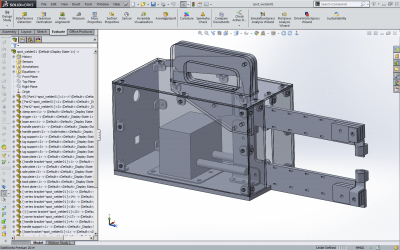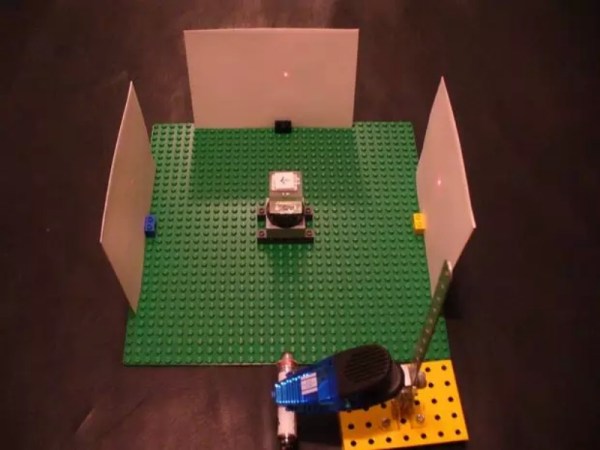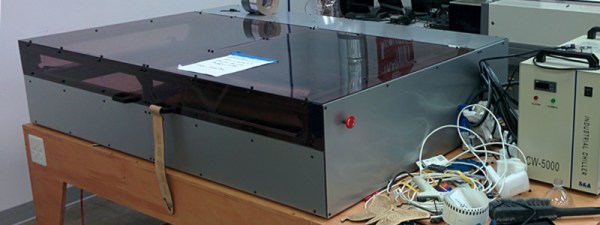Remember when building your own 3D printer was a big deal? We’re starting to think that building your own laser cutter might be the next hot topic.
Boasting a 16,000 square-foot facility, the Dallas Makerspace is an impressive collaboration of local artists, engineers, makers, and thinkers. Recently they embarked on building a serious laser cutting machine. They chose to go with the an open-hardware design rather than buying an off-the-shelf unit. What they built is based on the Lasersaur plans. (Another popular open-source build is the buildlog.net unit.)
They ended up with a huge 24″ by 48″ cutting bed and with a laser tube rated for 100 watts continuous output. It can cut 1/2″ plywood and 10mm acrylic with ease. The entire machine is built from 20mm Misumi aluminum t-slot extrusions, making more like a giant erector set then a commercial built machine. We hadn’t seen too many of the Lasersaur builds out in the wild, so we thought you might like to see one too.
Now, before you start ordering parts to build your own, you should know that a top of the line build like this will run you about $7-10k. But by comparison if you were to go with something with the same cutting area and power, you’d be looking at something like the “Epilog Fusion 40” at a whopping $40k. With that said, we expect to see more budget laser cutter builds. Cost can be cut dramatically when you go for a smaller machine, with less cutting area, and less power. With that, you can use less expensive steppers, drivers, and frame. We suspect a little as $700 for a smart shopper could yield a very respectable laser cutter.
If you’re interested in learning more about the Dallas Makerspace, we took a video tour back in early 2014.


















